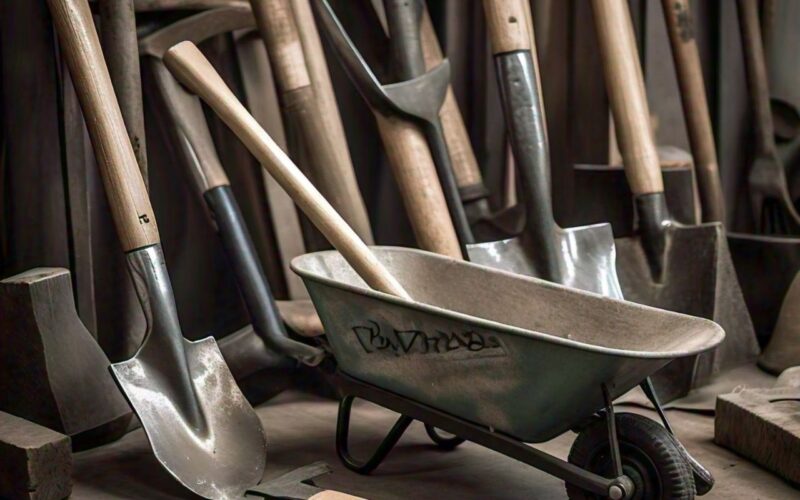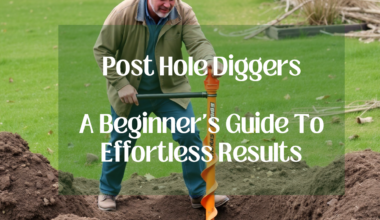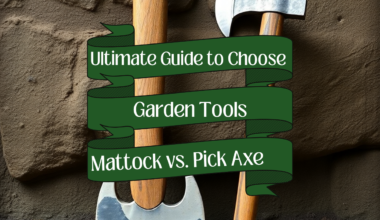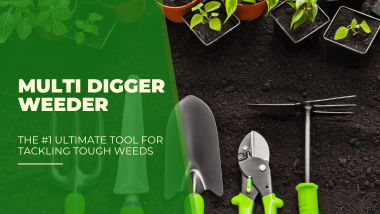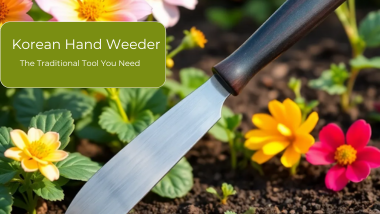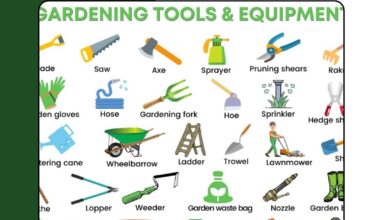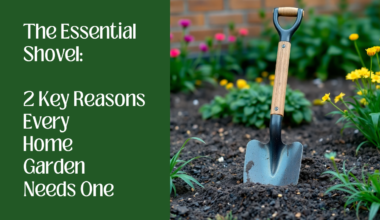Essential garden tools for every gardener can be hard to choose. Have you ever been in such situation before? It can be overwhelming to pick the right ones, especially with so many options available.
Having the right tools can truly transform your gardening experience and make it more enjoyable. So, what tools do you really need?
This guide will cover the must-have tools for every gardener. We’ll look at shovels, spades, forks, and rakes. You’ll learn how each tool helps you garden better. Get ready to make gardening easier and more fun!
Types of Digging Tools
For gardeners, having the right digging tools is key to a beautiful garden, particularly when managing vegetable gardens and raised beds. Shovels, spades, garden forks, rakes, hoes, and cultivators are some of the most useful tools. Let’s look at what makes each tool special and how they help in gardening.
Shovels and Spades
Shovels and spades are must-haves for any gardener. Shovels are great for moving large amounts of soil or mulch. They have a wide, deep bowl. Spades, with their flat, pointed blade, are perfect for digging holes and breaking through hard soil.
Shovels have long handles that help you get a good grip. Spades have shorter handles for precise work in tight spots.
Garden Forks and Garden Rakes
Garden forks and rakes are crucial for gardeners. Garden forks are great for breaking up hard soil and digging up root veggies. They have long, sharp tines.
Ground rakes are perfect for preparing seedbeds and removing grass. They have short metal tines. These tools make gardening easier and less hard on your body.
Hoes and Cultivators
Hoes and cultivators are versatile tools for the garden, especially for maintaining vegetable gardens and raised beds. Hoes are used for weeding and digging in tight spots. Garden hoes are especially effective in vegetable gardens and garden beds. There are different types of hoes for various tasks.
Soil tillers or cultivators help mix in fertilizers and improve soil structure. They have sharp blades for digging into the soil, making them essential tools for turning compost and establishing garden beds.
Knowing what each tool is used for helps gardeners pick the appropriate tools. This makes gardening more efficient, fun, and rewarding.
Essential Digging Tools for Every Gardener
As a passionate gardener, you know the appropriate tools make a big difference. They help with planting, weeding, preparing soil, and removing debris. Let’s look at the must-have digging tools for your garden.
A hand trowel is crucial for planting, transplanting, and loosening soil. A hand fork or cultivator helps aerate soil and gently loosen plant roots. For bigger tasks, long-handled shovels and spades are perfect for turning over soil and moving heavy stuff.
A garden rake is key for leveling soil, removing debris, and getting beds ready for plants. For pruning and shaping plants, high-quality hand pruners or pruning shears are essential. A sturdy wheelbarrow makes carrying your gardening tools easy.
No gardener should be without a watering can, garden fork, hoe, and leaf rakes. These tools help with watering, aerating soil, weeding, and clearing leaves. They make sure you’re ready for any gardening task.
Quality, durable tools make gardening easier and safer. With the right garden tools, you’ll be on your way to a beautiful garden.
Having the right tools is key to gardening success. Think about what you need and build a tool collection that works for you. With the appropriate tools, you’ll handle gardening tasks with ease and confidence, whether you’re working on garden beds or turning compost.
Choosing the Essential Garden Tools for Digging
When picking the best digging tools for your garden, think about a few important things. The size and shape of your garden, the soil type, and the tasks you have to do will help decide the best tools.
Factors to Consider When Selecting Digging Tools
Here are some key points to keep in mind when choosing digging tools for your vegetable garden and raised beds:
- Handle length and material: The handle’s length affects your leverage and how you stand. The material (wood, metal, or composite) affects how long it lasts and how comfortable it is to hold.
- Blade size and shape: The size and shape of the blade decide how well the tool works for different jobs, like digging, mixing soil, or weeding.
- Tool weight and durability: Tools that are heavier might last longer but are harder to move. Think about how much weight you can handle and what you need the tool for.
- Ergonomic features: Choose tools with ergonomic grips, soft handles, and surfaces that don’t slip to make your work less tiring and less painful.
Choosing the right digging tools can really change how easy, efficient, and comfortable your gardening work is, particularly in a vegetable garden or raised bed. It can also help your garden stay healthy and productive over time.
By thinking about these important factors, you can pick the best digging tools for your gardening tasks with confidence and ease.
Proper Use and Maintenance of Digging Tools
Using and taking care of your garden tools is key to making them last longer and work better. It’s important to stand right, use the right force, and not strain yourself. Sharpening and cleaning the blades, and storing them right can also make them last longer, particularly those made of stainless steel. Always check your tools for damage or wear and replace them when needed to stay safe and efficient in the garden.
Tips for Using Digging Tools Safely and Effectively
- Maintain proper posture and body mechanics to prevent strain and injury when using essential tools like shovels and garden hoes.
- Apply the appropriate amount of force to avoid damaging the tool or your body, particularly when working with garden hoes and shovels.
- Inspect tools before use and replace any that are damaged or worn.
- Wear protective gear, such as gloves and eye protection, when using digging tools.
- Avoid using excessive force or twisting motions, which can lead to tool damage or personal injury.
How to Clean and Store Essential Digging Tools
Cleaning and storing your digging tools right keeps them in good shape and ready for action, especially those made of stainless steel. Clean tools after each use with a wire brush or cloth to get rid of dirt and rust. Blades should be cleaned and sharpened if needed with a file or sharpening stone. Keep tools in a dry place, like a shed or garage, to stop rust and damage. Use hooks or a tool chest to keep them organized and safe. Taking good care of your tools means they’ll last longer and work better.
- Clean tools with a wire brush or cloth after each use to remove dirt and debris.
- Sharpen blades using a file or sharpening stone as needed to maintain their effectiveness.
- Store tools in a dry, protected area like a shed or garage to prevent rust and weathering.
- Organize and protect tools by hanging them or storing them in a tool chest to keep your essential tools like garden hoes and compost turners in good condition.
- Regularly inspect tools for any damage or wear and replace as necessary.
By following these tips for using, cleaning, and storing your digging tools, you can keep them in great shape. They’ll help you in the garden for many years. See other garden tools here.
Conclusion
Having the right garden tools is essential for every gardener. This guide covered must-have tools like shovels, spades, forks, and rakes, explaining how each can improve your gardening experience.
Remember, to invest in quality tools and taking care of them ensures a beautiful, healthy garden. Whether you’re new to gardening or experienced, the appropriate garden tools make all the difference. Happy gardening!

